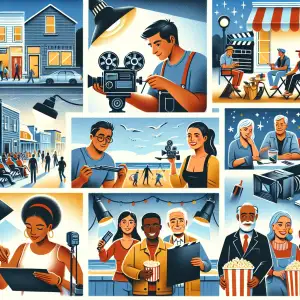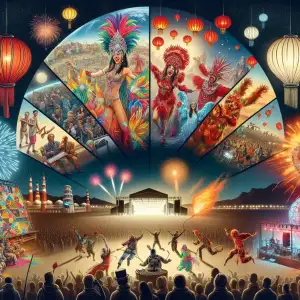Movies: Time Cut Editing: When Movies Play With Time
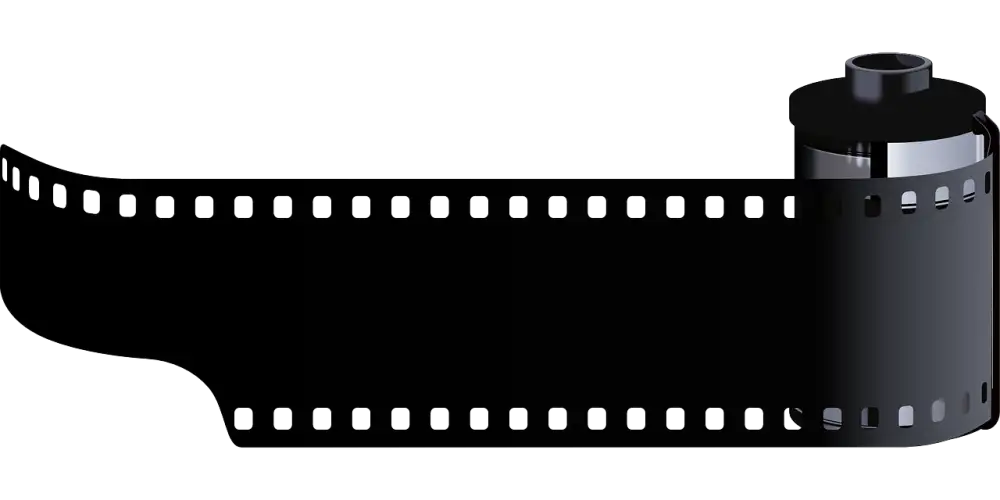
Filmmakers, much like wizards, possess the power to manipulate time. Unlike the flow of minutes and hours in our everyday lives, time in film bends to the will of the director. This manipulation can be subtle, like a slow-motion shot that stretches a fleeting second into an eternity of emotion, or overt, like a jump cut that propels the narrative forward with jarring urgency. These techniques, far from being mere gimmicks, are powerful tools that shape our understanding of the story, characters, and themes. A time cut, for instance, can abruptly transport us through different periods, forcing us to confront the stark contrasts or uncanny parallels between past, present, and future. Slow motion can elevate the mundane to the epic, imbuing a simple gesture with profound significance. By distorting time, filmmakers invite us to reexamine our own relationship with its passage, prompting us to reflect on memory, consequence, and the very essence of existence.
Jump Cut
A jump cut is a film editing technique where two sequential shots of the same subject are taken from camera positions that vary only slightly. This creates a jarring effect, as if the subject is "jumping" forward in time. Jump cuts are often used to condense time, removing unnecessary pauses or actions and creating a sense of urgency or disorientation. Imagine watching a character walk across a room. Instead of a smooth, continuous shot, a jump cut might show the character taking a few steps, then suddenly being several feet closer to their destination.
This technique disrupts the continuity of time and space, challenging the audience's perception of reality. While jarring, this disruption can be used effectively for stylistic purposes. For example, jump cuts are often used in montages to quickly convey the passage of time or to create a sense of frenetic energy. They can also be used to emphasize a character's internal state, such as anxiety or confusion.
Think of the iconic shower scene in Alfred Hitchcock's "Psycho." The rapid jump cuts between shots of the showerhead, the drain, and Janet Leigh's terrified face heighten the tension and create a sense of disorientation, mirroring the character's panic and the audience's own unease.
While jump cuts were once considered a mistake, they have become a widely accepted and even celebrated filmmaking tool, adding a layer of visual dynamism and psychological complexity to films. From the French New Wave to modern-day music videos, jump cuts continue to be a powerful tool for filmmakers looking to manipulate time and engage their audience in unconventional ways.
In a time-cut film, the editor becomes a sculptor of moments, chiseling away at the linear flow of time to reveal the hidden emotions and connections that lie beneath.
Elias Davenport
Montage
Montage, in its purest form, is a powerful tool for manipulating time in film. Unlike the seamless flow of real-time editing, montage embraces discontinuity, using a series of short shots to condense or expand time. Think of it as a cinematic highlight reel, compressing days, months, or even years into a rapid-fire sequence. A classic example is the training montage in sports films, where a character's progress from novice to champion is condensed into a few exhilarating minutes.
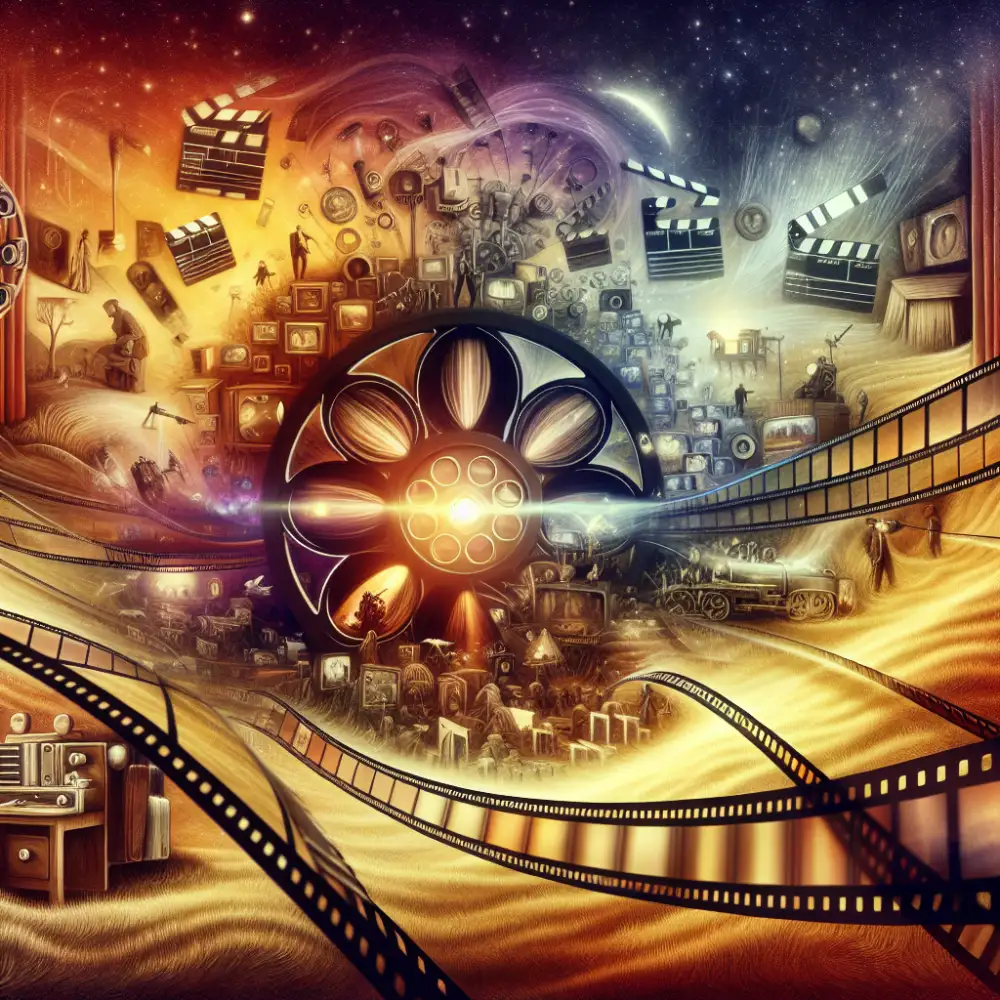
But montage goes beyond simple time compression. It can also create temporal ellipses, jumping forward in time by juxtaposing shots. Imagine a sequence showing a couple moving into their first apartment, followed by a shot of a half-painted nursery, and finally, a family portrait with a newborn. The montage wordlessly conveys the passage of time and the evolution of their relationship.
Furthermore, montage can evoke psychological time, manipulating the audience's perception of duration. By controlling the rhythm and pacing of shots, filmmakers can make a short event feel agonizingly long or stretch a fleeting moment into an eternity. This technique is often used in suspense and thriller films to heighten tension and create anticipation.
Time-Lapse
Time-lapse is a fascinating film technique that manipulates time to condense lengthy processes into digestible snippets. It involves capturing individual frames at extended intervals, often much slower than standard film rates, and then playing them back at typical speeds. This creates the illusion of time speeding up, allowing viewers to witness gradual transformations, natural phenomena, or the hustle and bustle of urban life in a captivating and accelerated manner. Imagine watching a flower bloom in seconds or a city skyline transition from day to night in mere minutes – that’s the magic of time-lapse.
The beauty of time-lapse lies in its ability to reveal the hidden dynamism of the world around us. Processes that might seem static or imperceptibly slow to the naked eye, like the movement of clouds or the growth of plants, are brought to life with mesmerizing clarity. Time-lapse can also compress vast stretches of time, enabling filmmakers to showcase the evolution of landscapes, the construction of buildings, or the changing seasons in a matter of moments.
From documentaries and nature films to commercials and artistic endeavors, time-lapse has become an indispensable tool for storytellers seeking to manipulate time and captivate audiences. It adds a layer of visual intrigue and allows for creative storytelling by compressing time, revealing hidden beauty, and offering fresh perspectives on the world around us.
Slow Motion
Slow motion, a captivating film technique, stretches time, allowing viewers to savor fleeting moments in all their glory. By capturing footage at a higher frame rate than what is typically projected, filmmakers can slow down the action during playback, creating an ethereal and dreamlike quality. This manipulation of time immerses the audience in a world where every detail, every subtle movement, is magnified.
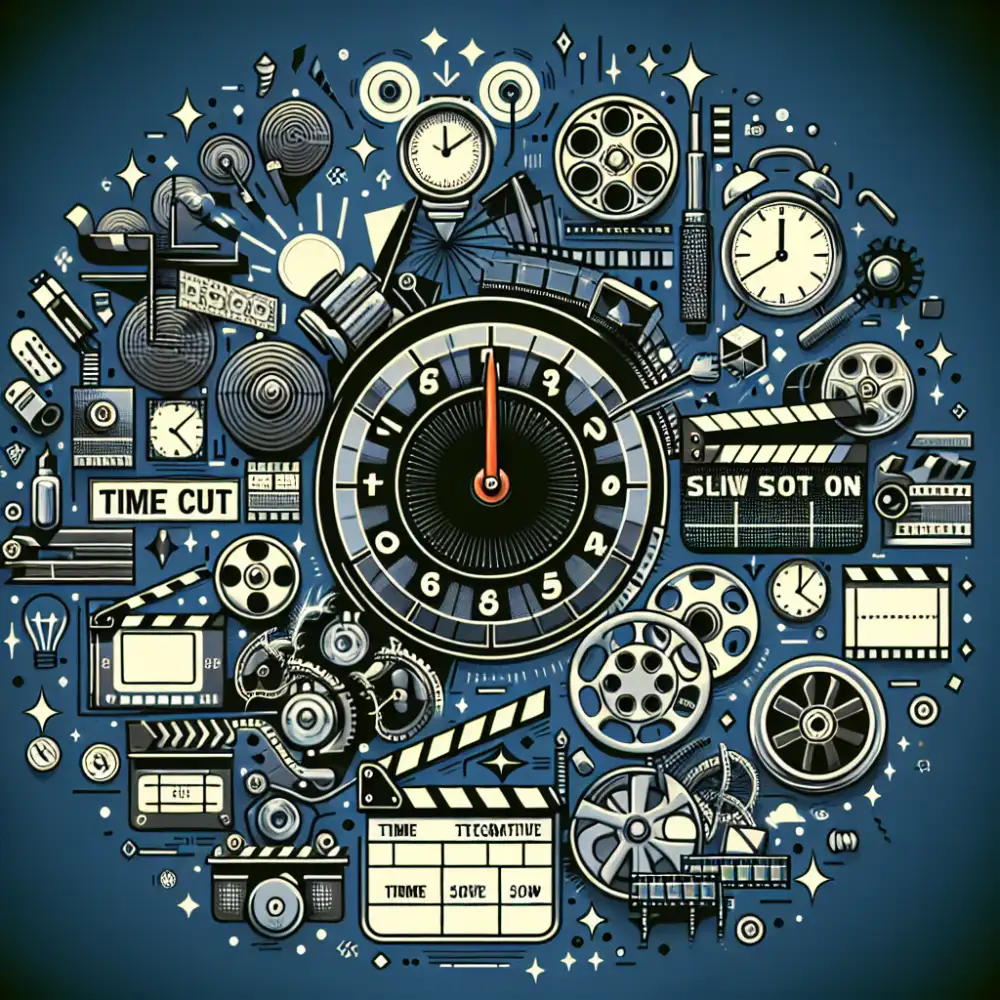
From the heart-stopping bullet ballets of "The Matrix" to the graceful athleticism of Olympic sprinters, slow motion has been employed to evoke a wide range of emotions. It can heighten tension, as in the drawn-out anticipation of a crucial moment, or amplify the beauty of a fleeting expression. By slowing down time, filmmakers can draw attention to the intricate details that might otherwise go unnoticed, revealing the hidden poetry in everyday occurrences.
The use of slow motion dates back to the early days of cinema. One of the earliest examples is August Musger's 1904 film "Muzzle Flash of a Revolver," which employed slow motion to showcase the intricacies of a gunshot. Since then, slow motion has become a staple of filmmaking, evolving alongside technology to achieve ever more breathtaking results.
However, slow motion is more than just a visual gimmick. When used effectively, it becomes a powerful storytelling tool, capable of deepening our understanding of characters and their emotions. A slow-motion close-up on a tear rolling down someone's cheek can convey volumes about their inner turmoil, while a stretched-out action sequence can transform a mundane event into a captivating spectacle.
Freeze Frame
Freeze frame, a cinematic technique where a single frame is repeated, effectively halting the motion on screen, has been a staple of filmmaking since the early days of cinema. This jarring interruption of the natural flow of time allows filmmakers to highlight a specific moment, imbuing it with significance and emotion. Think of the final shot of Butch Cassidy and the Sundance Kid, frozen in a hail of bullets, or the iconic image of Michael Jordan suspended in mid-air in Space Jam. These freeze frames don't just pause the action; they elevate it to the realm of the unforgettable.
But freeze frame is more than just a visual exclamation point. It can be employed subtly, adding a layer of subtext to a scene. A character's fleeting expression, frozen for just a beat too long, can reveal hidden depths or hint at unspoken truths. It can also be used to create comedic effect, exaggerating a pratfall or emphasizing a character's awkwardness.
The advent of digital filmmaking has given rise to even more sophisticated manipulations of time. "Time cut" editing techniques, like jump cuts and time-lapses, allow filmmakers to condense or expand time, creating disorienting or exhilarating effects. While these techniques differ from the static nature of freeze frame, they share a common goal: to play with our perception of time, forcing us to re-examine the familiar and discover new meaning in the fleeting moments that make up our lives.
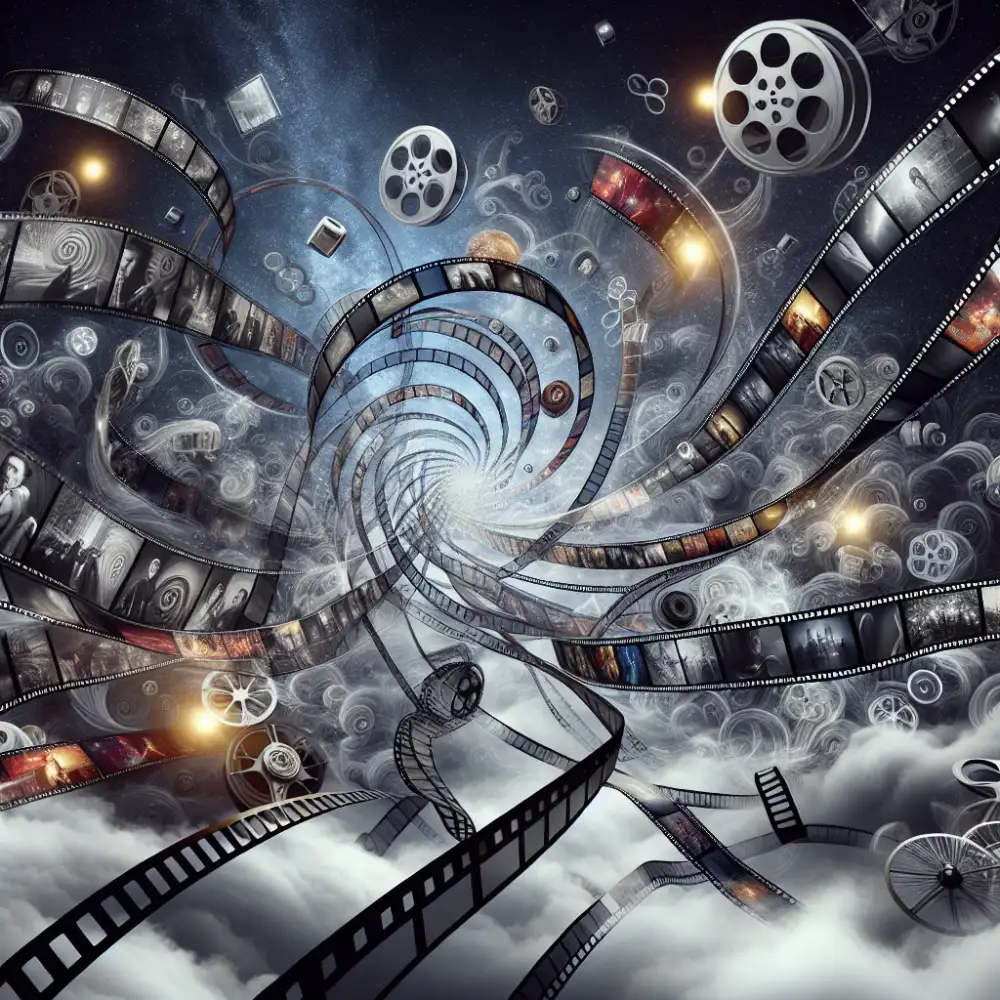

Flashback/Forward
Time cut is a film editing technique where the linear flow of time is broken, and the audience is taken forward or backward to a different point in the story. This technique can be used in many ways, each with unique effects on the narrative and the viewer's experience.
One of the most common uses of time cuts is to create a flashback. Flashbacks are often used to provide backstory or context for the present-day events of the film. For example, a flashback might show us how a character developed their fear of heights or why two characters are now sworn enemies. By providing this additional information, flashbacks can help us to understand the characters and their motivations more deeply.
Another common use of time cuts is to create a flashforward. Flashforwards are less common than flashbacks, but they can be just as effective. They give us a glimpse into the future, which can create suspense or foreshadow future events. For example, a flashforward might show us the consequences of a character's actions or the outcome of a particular event.
Time cuts can also be used to create parallel narratives. This is where two or more storylines are shown alongside each other, jumping back and forth between them. This technique can be used to compare and contrast the different storylines or to show how they are interconnected. For example, a film might use parallel narratives to show the same event from multiple perspectives.
Time cuts are a powerful tool that filmmakers can use to manipulate time and create complex and engaging narratives. By understanding the different ways that time cuts can be used, we can better appreciate the artistry of film editing.
Ellipsis
Ellipsis, in its most basic form, is the omission of time. Think of it like a jump cut's sophisticated cousin. While a jump cut might abruptly remove a few seconds for a jarring effect, ellipsis gracefully glides over unnecessary durations. Imagine a montage showing the passage of time as a character travels: a shot of them packing a suitcase, then on a plane, then arriving at their destination. We don't need to see the entire journey, just the essential moments that tell the story.
Ellipsis allows filmmakers to condense time, keeping the narrative moving at a good pace. It helps avoid redundancy and keeps the audience engaged. But ellipsis isn't just about saving time; it's a powerful tool for creating meaning. By carefully choosing what to omit and what to show, filmmakers can emphasize certain aspects of the story, control the flow of information, and even evoke specific emotions in the audience.
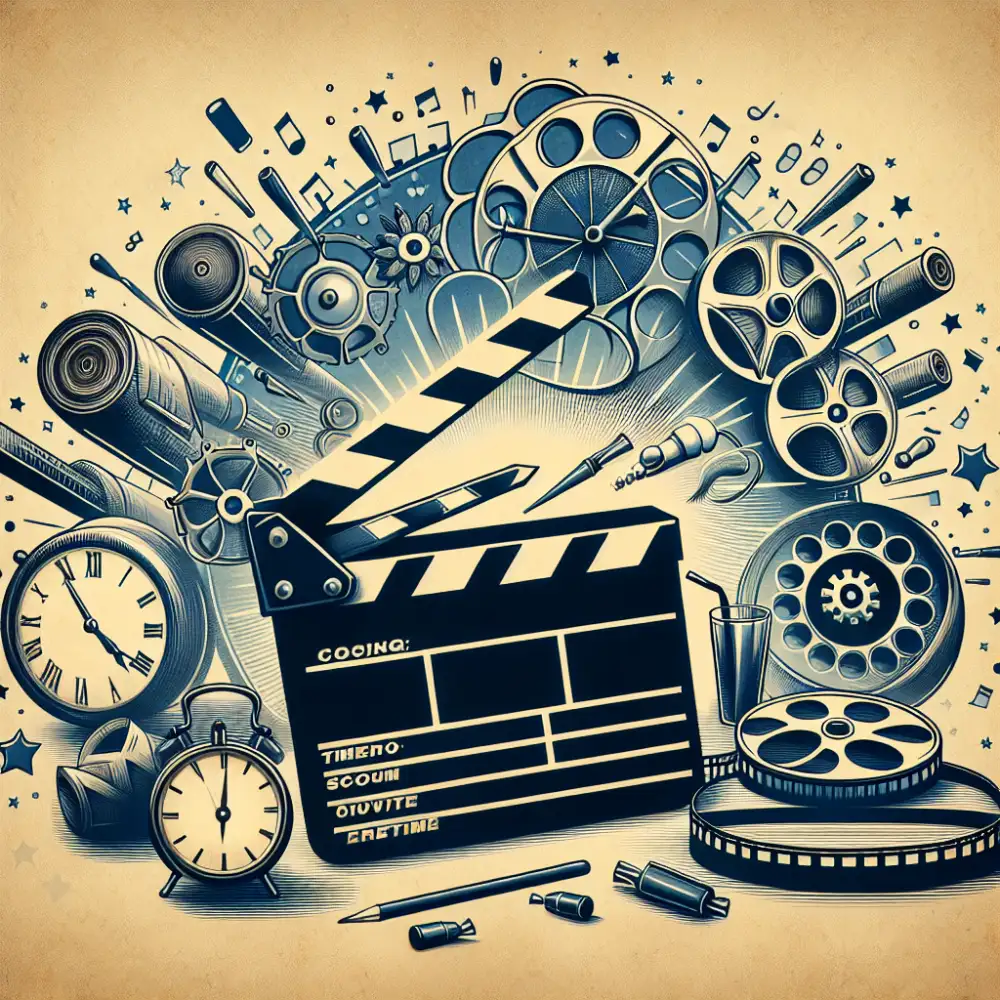
A long, drawn-out ellipsis can build suspense, while a quick, choppy one might create a sense of urgency or disorientation. Think about how differently a romantic montage feels compared to a frantic race against time – both can be achieved using ellipsis, but the manipulation of time creates vastly different experiences.
Expansion
Time manipulation in film, and specifically the use of expansion, allows filmmakers to stretch a moment far beyond its natural duration. While a time cut might abruptly jump between moments, expansion lingers, forcing the viewer to confront the weight of a scene. This can be achieved through various techniques. Slow motion is perhaps the most obvious, magnifying each second and exposing details otherwise lost in the blink of an eye. Repetition, like a record skipping, can emphasize a specific action or emotion, turning the mundane into the unnerving. Overlapping sound, where audio from a scene bleeds into the next, can blur the lines of time, creating a sense of disorientation or dreamlike fluidity.
The effect of expansion is often one of heightened emotion. A loving embrace, stretched over several seconds, becomes imbued with a sense of longing and melancholy. A violent act, slowed down, loses its visceral impact and instead becomes a chilling study of brutality. By manipulating time, filmmakers can control the audience's perception, making them feel the drawn-out agony of suspense or the heartbreaking beauty of a fleeting moment.
The manipulation of time in film, whether through the rapid-fire cuts of a montage or the drawn-out suspense of slow motion, stands as a testament to the medium's unique ability to sculpt our perception of reality. The time cut, in its seeming simplicity, possesses a deceptive power. It can condense vast periods into the blink of an eye, forcing us to confront the weight of history or the abruptness of change. Conversely, it can stretch mere seconds into agonizing stretches, amplifying emotions and ratcheting up tension. When wielded by a skilled filmmaker, time manipulation ceases to be a mere technique and transforms into a potent storytelling device, capable of eliciting visceral reactions and leaving a lasting impact on the viewer long after the credits roll. It serves as a reminder that film, at its core, is the art of manipulating time itself, bending it to its will to craft narratives that resonate with the human experience.
Published: 26. 06. 2024
Category: Food


